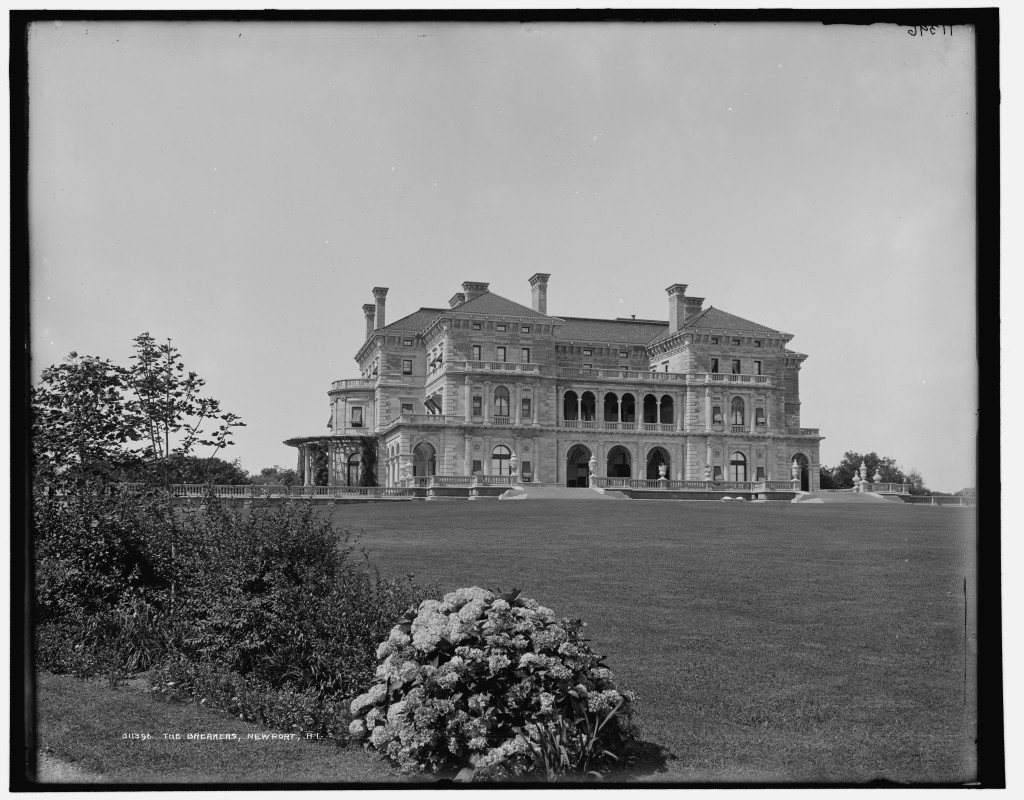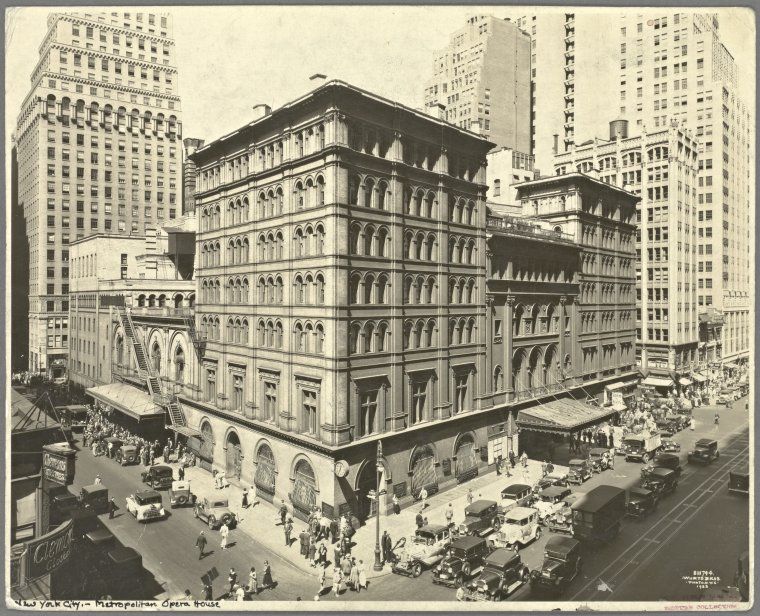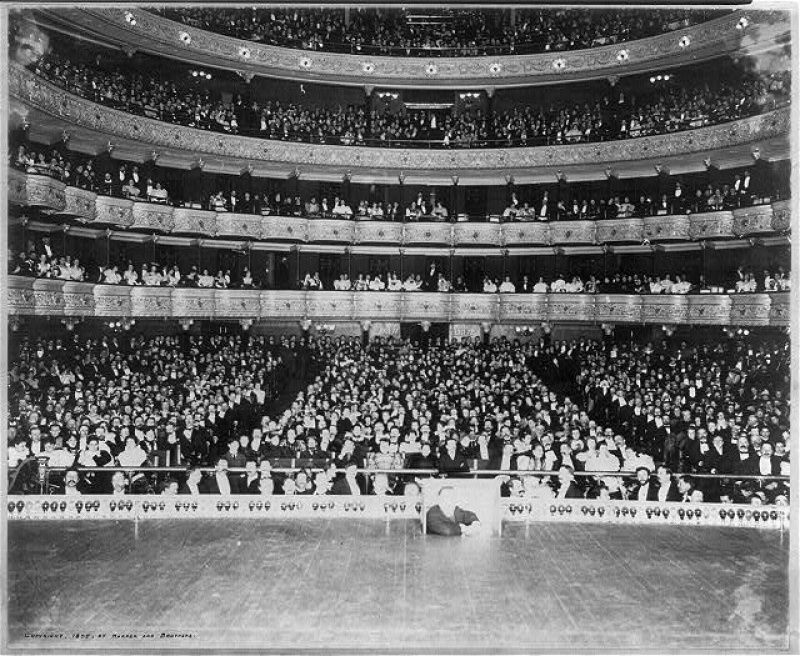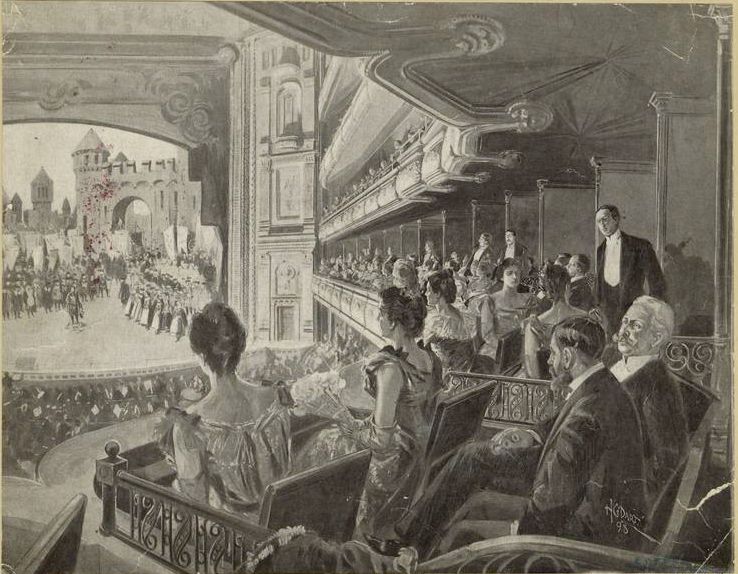Last Chance to Catch NYC's Holiday Notalgia Train
We met the voices of the NYC subway on our nostalgia ride this weekend!


As rivalries go, competing Gilded Age opera houses might not sound very exciting. But take a closer look. You’ll see two powerful women fighting for the crown of New York society. Who were these ladies? Well, they were none other than “The Mrs. Astor” and Alva Vanderbilt. Mrs. Astor, the queen bee, ruled New York society. In fact, she was so well known that her calling cards only had three words: The Mrs. Astor. Alva Vanderbilt was a force in her own right. However, New York society shunned her, viewing Alva as an outsider and interloper. Despite their societal status, their petty feud (over opera boxes!) unbelievably changed New York society forever.
In the hope of illuminating New York society in the Gilded Age, some background is needed. Caroline Schermerhorn Astor was a Knickerbocker, a true native New Yorker. Her family, descending from original Dutch settlers, made its fortune in shipping. The family of her husband, William Blackhouse Astor acquired its riches through fur trading and real estate. Known as the gatekeeper, Mrs. Astor enforced strict rules for society, but unfortunately, the social-climbing Vanderbilts were judged not worthy by Mrs. Astor. Railroad money was not respectable in her eyes. Also, she despised the fact that Alva’s husband, William Kissam Vanderbilt, had inherited his wealth. Although to be fair, both Astors had inherited pots of money, but it wasn’t offensive railroad money.

In view of exacting etiquette, society closely followed two seasons: winter and summer. Accordingly, the wealthy fled the city for the cooler shores of Newport, Rhode Island starting in July. For a mere eight weeks, the summer “cottages” were filled with their prosperous families. Even though the homes had the name of cottages, they were actually lavish mansions. These mansions were fully staffed with dedicated servants. Their only job was to meet the needs of the families and their guests. Besides, the fabulously rich were too busy attending lawn parties, tennis matches and sailing.
Beginning in November, the winter social season commenced with balls, formal dinners and holiday parties. Nonetheless, the official start was the opening night of the Academy of Music. So here lies the sticking point. With only eighteen opera boxes, they were reserved for the most distinguished families. To that end, Alva and the Vanderbilts desperately wanted an opera box and with it, a promising entrance into New York society. However, Mrs. Astor was determined to keep them out.

Obviously, after being rejected year after year, Alva had enough of the Academy of Music. Also tired of being ignored, the scorned families joined together to create the Metropolitan Opera Company. Naturally, the company needed its own theater, one that was bigger and better than the Academy. During this time, the fashionable stores were moving uptown. Therefore, the Met would be built uptown. Constructed on 39th Street and Broadway. the new theater was closest to Mrs. Astor’s and Alva’s 5th Avenue residences. To contrast, the Academy of Music was located in the less chic address of 14th Street.
It is fitting that the Metropolitan Opera House would exceed the Academy of Music in many ways. The New York Times commented on the Academy of Music’s acoustics stating, “the tone of their voices sometimes went astray in the…auditorium”. Yet the smallest note of music could be heard in the Met’s sold-out theatre. Equally important, the Met surpassed the Academy in luxury with 122 opera boxes. The building, which had the largest proscenium in America, was designed architect J. Cleveland Cady, with gold interiors by renown designers Carrere & Hastings. By Showcasing the jewelry and lavish clothes, the glamorous boxes allowed their owners to see and be seen. Because of this opulence, the balconies earned the nickname “Golden Horseshoe.” Accordingly, the combination of the sumptuous design and superior sound impressed the patrons and press. At the end of opening night, the Metropolitan Opera house was declared a triumph.

Finally, Alva had what she had always dreamed of: acceptance. Reluctantly, Mrs. Astor admitted defeat and abandoned her Academy of Music for the stylish Met. The old guard also relented. For where Mrs. Astor goes, society follows. The Metropolitan Opera House had done the impossible, bringing the families of new and old money together, under one Gilded Age roof, forging the beginning of modern New York society.

By the turn of the 20th century, Mrs. Astor suffered the unthinkable: a scandal of her own. Her daughter, Charlotte would divorce after various newspapers uncovered her affair. Suffering from this great embarrassment, Mrs. Astor’s troubles sadly were not over. Her husband and two of her children would die a few years apart. In the later part of her life, Mrs. Astor was afflicted with dementia. No longer able to command her peers, “The Mrs. Astor” died in 1908 at the age of 78. Supposedly, it took three women (one being Alva) to fill Mrs. Astor’s place in New York society.
Subsequently, Alva struggled with her own problems. By divorcing William, she caused her very own scandal. To reclaim her position in society, Alva forced her only daughter to marry into British royalty. Nevertheless, Alva herself would go on to have a happy marriage with Oliver Belmont. Professionally, Alva was instrumental in designing her nine homes. As a result, she became the first female member of the American Institute of Architects. Ultimately, Alva’s greatest achievement was her championing labor struggles and Women’s Suffrage. She died in 1933 at the age of 80.
Lamentably, the Metropolitan Opera House would show its age. Even with its excellent acoustics, the stage area could not accommodate modern productions. In 1966, the Old Met had its final performance and was demolished more than a year later. Heading uptown again, the new Metropolitan Opera House relocated to the new Lincoln Center.
Answering the question about which powerful woman ruled New York Society is tricky. Alva forced Mrs. Astor’s hand with the success of the Met. Yet Mrs. Astor enacted her own strict codes here. She expected patrons to honor her with a visit to her personal box. Moreover, no one ever left a performance before Mrs. Astor as It was thought as disrespectful. Who ruled New York society? You can decide for yourself by exploring the reimagined Gilded Age clash in Renee Rosen’s novel, The Social Graces.
Next, check out the History of The (Old) Metropolitan Opera House!
Subscribe to our newsletter